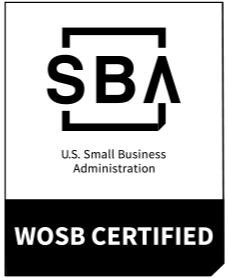Working Smarter: The Benefits of AI in Compliance Mapping
Imagine a traditional compliance audit. Collecting and sifting through policies and records, conducting interviews, evaluating internal controls, and testing processes are both time-consuming and carry significant margin for human error.
As more organizations and federal agencies discover and debate the ethics of artificial intelligence (AI) use in daily work, evidence continues to emerge supporting the benefits AI can bring to some of the most foundational business operations, including compliance and security. With the rise of new standards, like the National Institute of Standards and Technology’s (NIST) Federal Information Processing Standards (FIPS), federal agencies will need to rapidly adapt their cybersecurity infrastructure to accommodate mandatory changes or risk vulnerability to quantum computing threats.
The solution? Automated compliance mapping.
Automated compliance mapping aligns an organization’s strategy, policies, standards, guidelines, and baselines with regulatory and industry standards by leveraging AI, machine learning, or specialized software. Organizations can then automate the identification and analysis of compliance frameworks and map them directly to business processes to streamline workflows, improve data-driven decision-making, and pivot team efforts toward more strategic tasks.
Benefits of Automated Compliance
“Automated compliance mapping is coming, and it is, in fact, already here in some industries,” says Dr. Doug Rose, Director of Cyber Strategy and Operations at Emerald One. “It’s just not widely adopted yet.”
Automated compliance mapping comes with a host of benefits for organizations looking to gain a competitive advantage in piloting innovative technology:
- Deeper Connection Between AI and Employees: Automating repetitive tasks like matching policies to compliance requirements reduces hours employees spend on manual audits and significantly shrinks the margin for human error. AI and machine learning capabilities can analyze large data sets in record time, allowing your team to focus on more meaningful work.
- Cost-Effectiveness: Similarly, reducing manual labor improves resource allocation. Additionally, quickly identifying and mitigating compliance risks can help avoid fines associated with non-compliant tools or procedures.
- Proactive Risk Management: Identifying gaps or risks early on allows for faster corrective actions. Automated systems can also be programmed to dispatch real-time alerts for any regulatory changes, ensuring your team stays current.
- Improved Audit Preparedness: When audit season rolls around, compliance automations have your back. By centralizing and organizing data, you can simplify your reporting process through integrations with dashboards or other reporting tools.
- Scalability: As your business grows, so can your automation capabilities. Discovering benefits in one area of your business can translate into developing similar efforts in another. Automation can also adapt to myriad frameworks, like FIPS and ISO 27001, with minimal manual intervention.
“All of this makes the argument for automated mapping,” Doug notes. “If we pull back from the concept of compliance mapping itself, which is something that might appear to be a complex subject, application of it boils down to pattern or object recognition, natural language processing, and the ability to associate one with the other.”
Making Automated Compliance Work for You
While adopting a “set it and forget it” approach to automation is tempting, complete reliance on technology poses a risk of software errors or unexpected system outages that may disrupt the audit processes. Additionally, the lack of context to interpret ambiguous regulations, evolving standards, and data privacy and security risks may leave even the most sophisticated automation systems open to failure.
For Doug, blending the human and technology aspects is crucial, especially from a security standpoint.
“Tossing something over the fence, no matter how well constructed it is, no matter which organizational function it comes from, doesn’t equal holistically secure anything. Truly converged approaches between compliance and security still require a human in that grey gap where both disciplines crash into various technologies.”
Organizations looking to implement automated compliance mapping should consider a hybrid approach that allows for human judgment and oversight. For example, using an AI-driven tool to monitor regulatory updates or generate and send compliance reports can save time and labor, but compliance officers should be on hand to review flagged issues for suspicious activity or interpret any ambiguous requirements.
To ensure your automated compliance processes can best serve your organization, follow these simple tips:
- Conduct a Thorough Assessment: Create a comprehensive inventory of current policies and processes that need to be updated. Develop a phased implementation plan that focuses on the most critical pieces.
- Define Roles: Determine which tasks will be fully automated and which will be handled by team members. Ensure everyone understands the expectations of their role and the regulatory standards they’ll be measuring against.
- Implement Regular Training: Building your team’s confidence in leveraging AI capabilities is key. Conduct regular training sessions to help teams understand how to use automated tools, interpret results, and flag any risks.
- Monitor Continuously: AI changes—and learns—quickly. Schedule regular audits of any automated processes to capture any regulatory updates.
Create a Feedback Mechanism: You get out of AI what you put into it. Encourage your team to report issues and suggest improvements through a user-friendly feedback loop. Discuss suggestions and problems as a team to boost collaboration and instill a sense of ownership.
Looking Ahead
Automated compliance mapping refers to using technology and software tools to streamline aligning an organization’s policies, procedures, and controls with regulatory requirements and industry standards. This approach leverages automation to efficiently manage and document compliance efforts, reducing the manual workload and minimizing the risk of human error. While some trepidation exists regarding regulatory environments, data management issues, and robust governance frameworks, organizations shouldn’t be afraid to take a leap of faith in reducing self-imposed complexity.
“We almost never reach the end of the road on any one tank of gas (or single charge of a battery),” Doug says. “But that shouldn’t prevent us from setting out in the first place.”
If you’re ready to kick-start your own journey in automated compliance or cybersecurity infrastructure implementation, Emerald One’s expertise in transition planning, strategy development, and cybersecurity can help you embrace the change with confidence. Our human-centered, technology-backed approach ensures your organization is adaptable to new regulations and prepared to navigate complexity while securing a strong, resilient future for your organization.
About Emerald One
Emerald One, LLC is a 100% woman-owned small business focused on closing the gap between strategy and execution and specializes in digital transformation, resource value maximization, new asset alignment, and executive coaching and communication.







